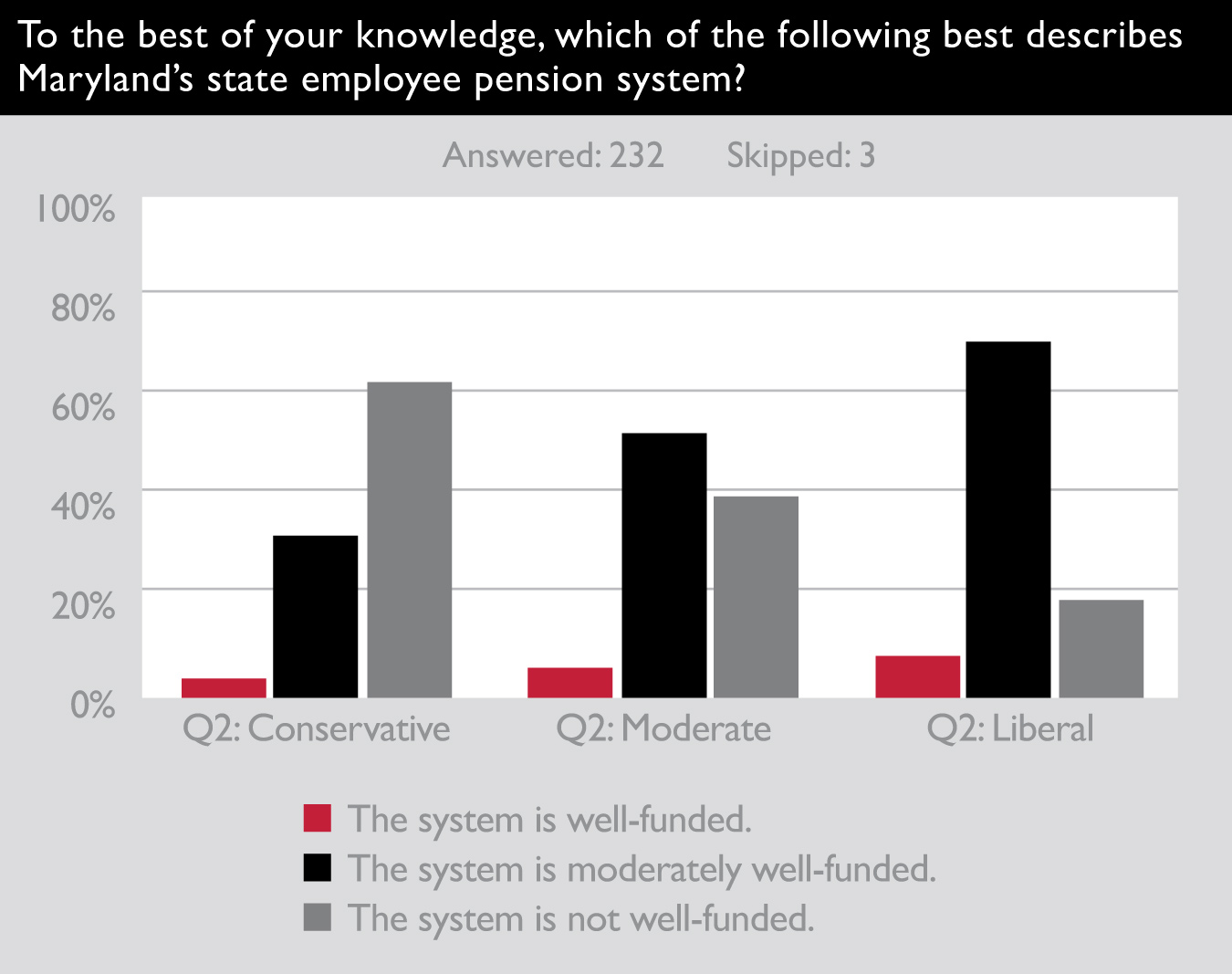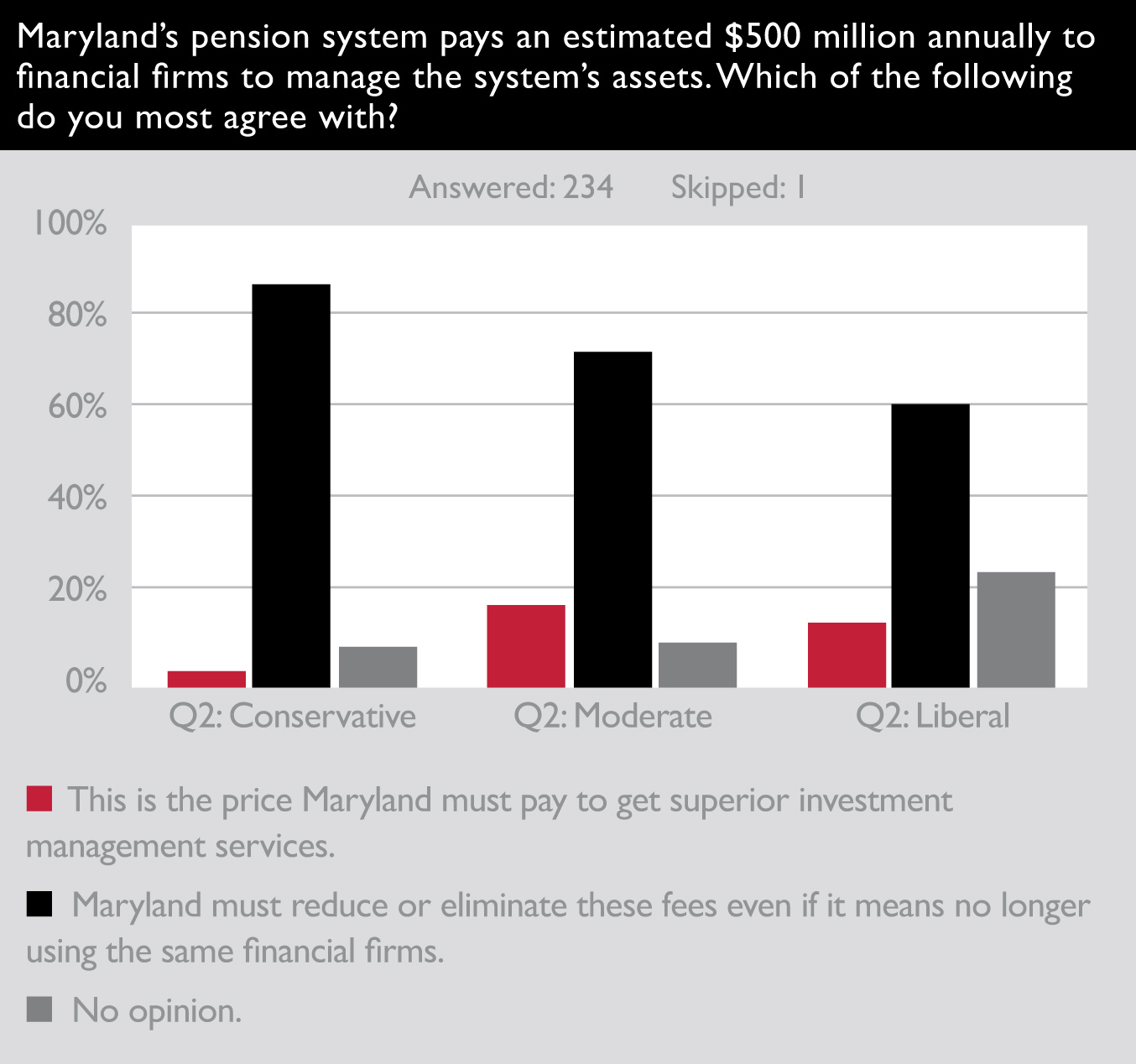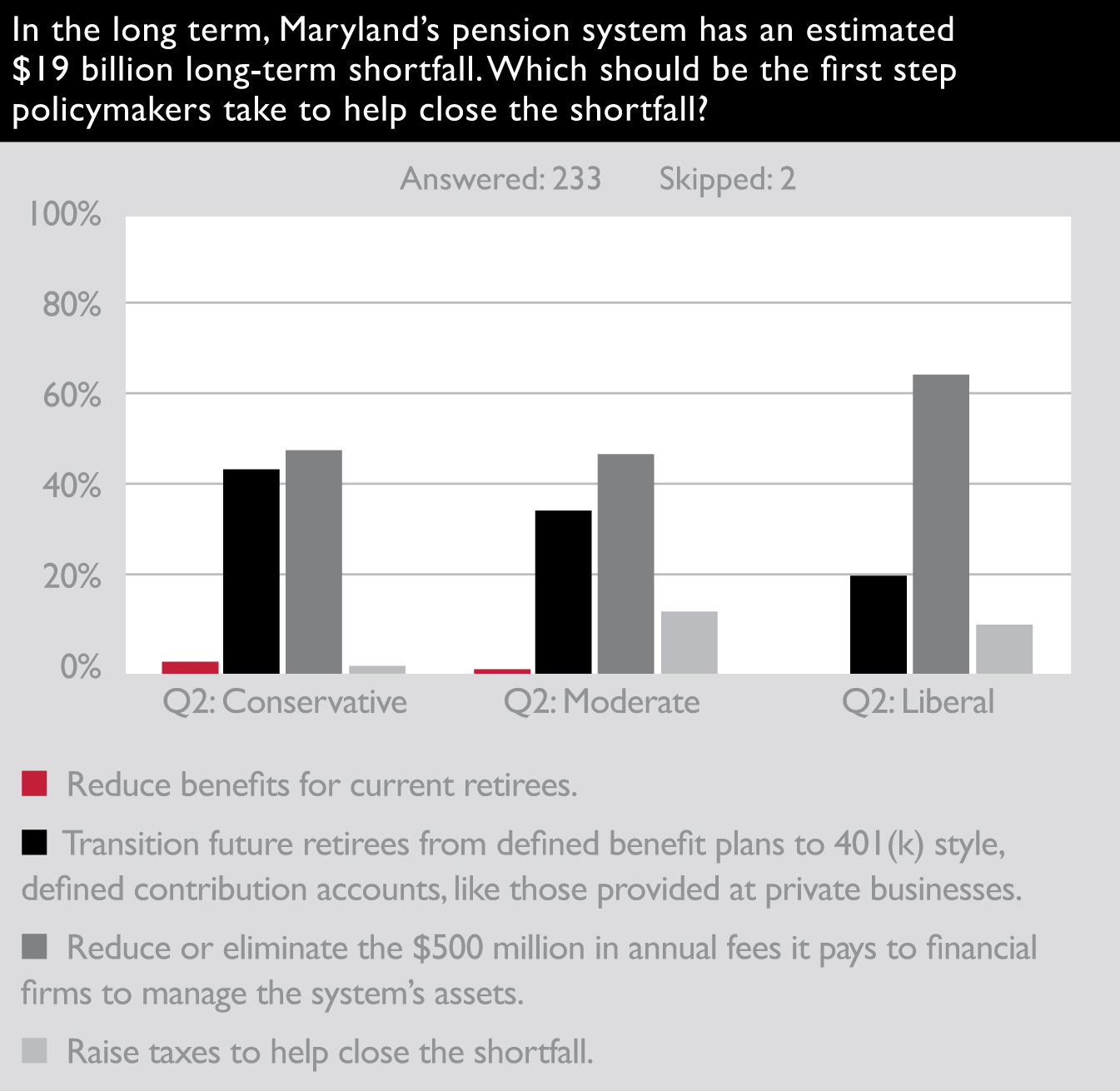Maryland Pension Survey Results
We recently conducted a survey that shows Marylanders of all political stripes agree on one big issue: Maryland’s pension system needs help and there are commonsense ways to fix it. The Maryland State Pension & Retirement System covers more than 400,000 citizens, yet faces a $19 billion shortfall in the future. Make no mistake - the stakes are high!
More than 230 Marylanders took our survey, which explored what Marylanders know about our State Pension & Retirement System and what reforms they might support.
The results were fascinating, so we want to share them with you. The survey is not scientific, but does offer an illuminating snapshot into the perceptions Maryland citizens have about a system that covers so many current and former state employees. Here’s what we learned:
- Everyone agrees the system is not well-funded. A mere 8.5 percent of self-described liberals and 4 percent of self-described conservatives describe Maryland’s state pension system as “well-funded".

- Money management fees are too high. Sixty-one percent of liberals and 86 percent of conservatives say Maryland “must reduce or eliminate” the estimated $500 million annually the pension system pays to financial firms to manage the system's assets.

- Current retirees should be held harmless. Zero percent of liberals and 3 percent of conservatives believe Maryland should reduce or eliminate pension benefits for current retirees as the first step to help close Maryland’s $19 billion pension shortfall.

- Bipartisan support for reform. As seen in the chart above, liberals (66 percent) and conservatives (49.5 percent) chose reducing or eliminating money management fees as their preferred first step toward closing Maryland’s pension shortfall. The next most popular reform for both liberals and conservatives was transitioning future retirees from defined benefit plans to 401(k) style, defined contribution accounts, like those provided at private businesses.
Not surprisingly, the sentiments of self-described moderates fell squarely between liberals and conservatives on these questions and more.
So, what happens now? In the coming weeks, the Institute will release new analysis and ideas to stabilize the pension system so that future retirees have the retirement security they deserve.





